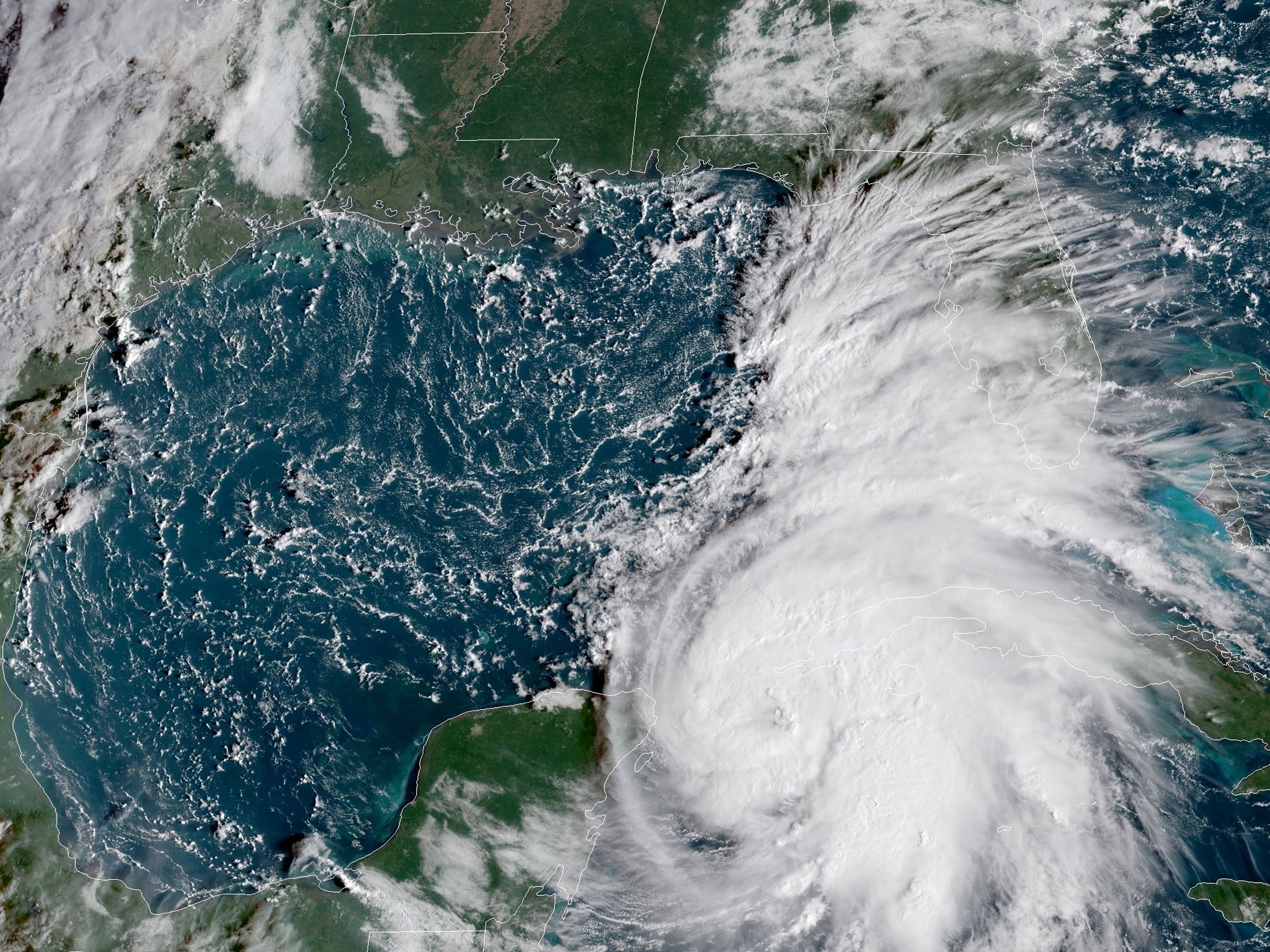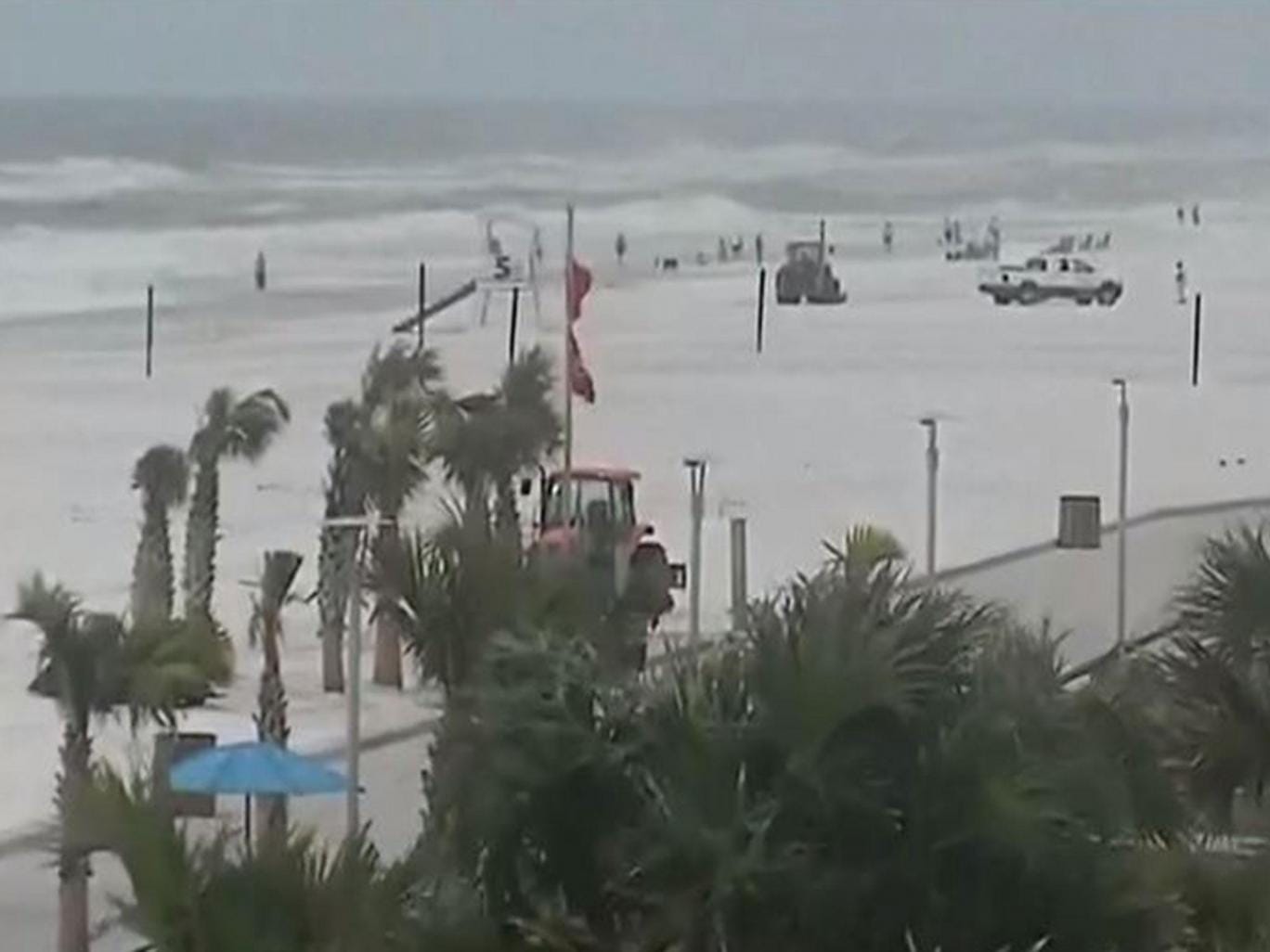President Donald Trump has declared a state of emergency for Florida as it prepares for Hurricane Michael, which he said could be “more intense” than Florence.
He tweeted: “Hurricane on its way to the Florida Pan Handle with major elements arriving tomorrow. Could also hit, in later stage, parts of Georgia, and unfortunately North Carolina, and South Carolina, again….Looks to be a [Category 3 storm] which is even more intense than Florence. Good news is, the folks in the Pan Handle can take care of anything”.
Florence, which was ultimately downgraded from a Category 4 hurricane to a tropical storm, pummelled the same region just weeks ago and many low-lying areas along the coast are still recovering.
Florida Governor Rick Scott urged residents in the path of the storm to evacuate to a safer location.
“Let me be clear. Hurricane Michael is a monstrous storm, and we’re just hours away from seeing impacts. This is the most destructive storm to hit the Panhandle in decades. This storm could kill you,” he said.
Mr Scott and his Democrat opponent Bill Nelson have temporarily suspended their campaigns for the US Senate in light of the storm preparations.
The storm is expected to make landfall on Tuesday and the Florida panhandle, the northwestern section of the peninsular state, is expected to bear the brunt of it.
Mr Trump also said the Federal Emergency Management Agency (Fema) will also be at the ready to assist those affected by Michael.
Homeland Security chief Kirstjen Nielsen said her agency and the Defence Department were “actively preparing” for Michael.
“In rapid succession last year, Hurricanes Harvey, Irma and Maria devastated the southern states and territories,” Ms Nielsen said, adding that last year “one of the costliest and most damaging seasons for natural disasters in history.”
The administration has still not attributed the rise in deadly and costly hurricanes to climate change, as many scientists and meteorologists have done.
The National Weather Service said earlier in the week the storm “could develop into a potentially catastrophic event for the northeastern Gulf Coast”.
The National Hurricane Center reported wind speeds in the hurricane, as measured by its Hurricane Hunter Aircraft, were hovering around 110mph (177 km/h), but there were later reports estimating the speed picked up to 120mph, with wind gusts of 150mph.
Florida Governor Rick Scott urges residents to prepare for tropical storm Michael
It is expected to be the strongest hurricane to make landfall in the US this year.
Irma took that designation last year as it also hit southern Florida.
Currently the storm is moving north, headed straight for Panama City, Florida.
Storm surge watch, or the threat of floods from the hurricane as a result of unrelenting rain, is in effect for areas along the Alabama-Florida border all the way to Tampa Bay.
However, even those in inland Georgia up to the city of Savannah and Charleston, South Carolina have been placed under a tropical storm warning.
It is a less severe designation than a hurricane, but Florence made landfall as a tropical storm and still caused flooding and some infrastructure damage.
Charleston airport had actually closed for days due to the threat of Florence.
Watch more
-
Watch live video from Alabama as Hurricane Michael barrels towards USA
-
Watch live video from Alabama as Hurricane Michael barrels towards USA



